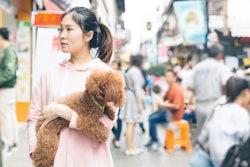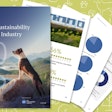
Dualities emerged among pet owners during the first months of the COVID-19 pandemic in the United States. For example, while pet adoptions seemed to boom during the onset of the pandemic, others may be waiting until public health and economic conditions improve. The pandemic influenced various groups of Americans in different ways.
New pet versus waiting
In a survey, American Pet Product Association (APPA) analysts observed that the percentage of people who delayed getting a pet nearly equaled the percentage who reported bringing a new pet into their household. While 7% of respondents said they adopted or bought a new pet, 6% decided to wait. APPA shared their results in “COVID-19 Pulse Study: Pet Ownership During the Pandemic.”
Similarly, the same percentage of respondents said they decided to foster a new pet as those who reported giving up a pet, at 2%. The majority, 85%, reported their pet ownership was unchanged by the pandemic.
Survey participants of some age groups were more likely to say that the pandemic had changed their pet ownership status. Gen Z (11%) and millennials (16%) reported bringing a new pet into their household, while another respective 4% and 6% fostered a pet However, 4% in each age group gave up a pet, while 10% of Gen Z respondents delayed getting a pet due to the pandemic.
Likewise, a higher than average percentage of those with these characteristics reported acquiring a new pet or fostering during the first months of the pandemic:
- household incomes of US$100K or more,
- young children at home and
- urban communities.
Respondents in these demographic groups reported no effects on their pet ownership due to the COVID-19 pandemic:
- Gen X,
- Baby Boomers,
- Caucasians,
- incomes between US$50K-UA$100K,
- no young children
- suburban or rural communities.
Affected versus unchanged pet owners
Certain demographic groups were more likely to alter their pet ownership behaviors, while the majority remained largely the same. Respondents in these groups were statistically less likely to report any change in shopping patterns for pet food and other products:
- Gen X or Baby Boomers
- female,
- Caucasian,
- Midwest or South residents,
- rural communities and
- lower household incomes.
These respondents tended to say they had altered their pet food and other product shopping behaviors.
- Gen Z or Millennial,
- Black,
- Hispanic,
- Northeast U.S. residents,
- urban areas and
- higher household incomes.
Along with pet spending changes, survey participants with those characteristics also were more likely to report that the pandemic had hurt their employment. However, they were more likely to report positive effects on their own pet ownership.


















